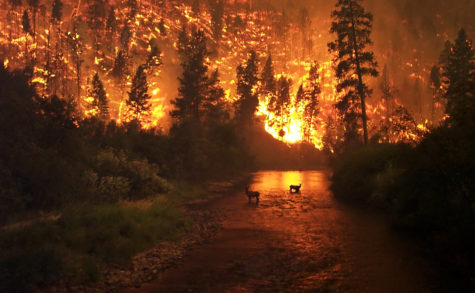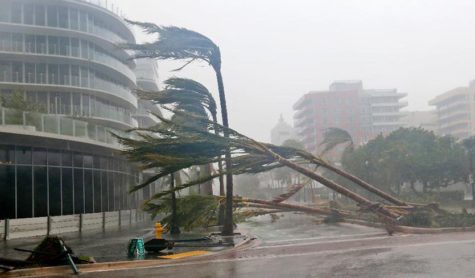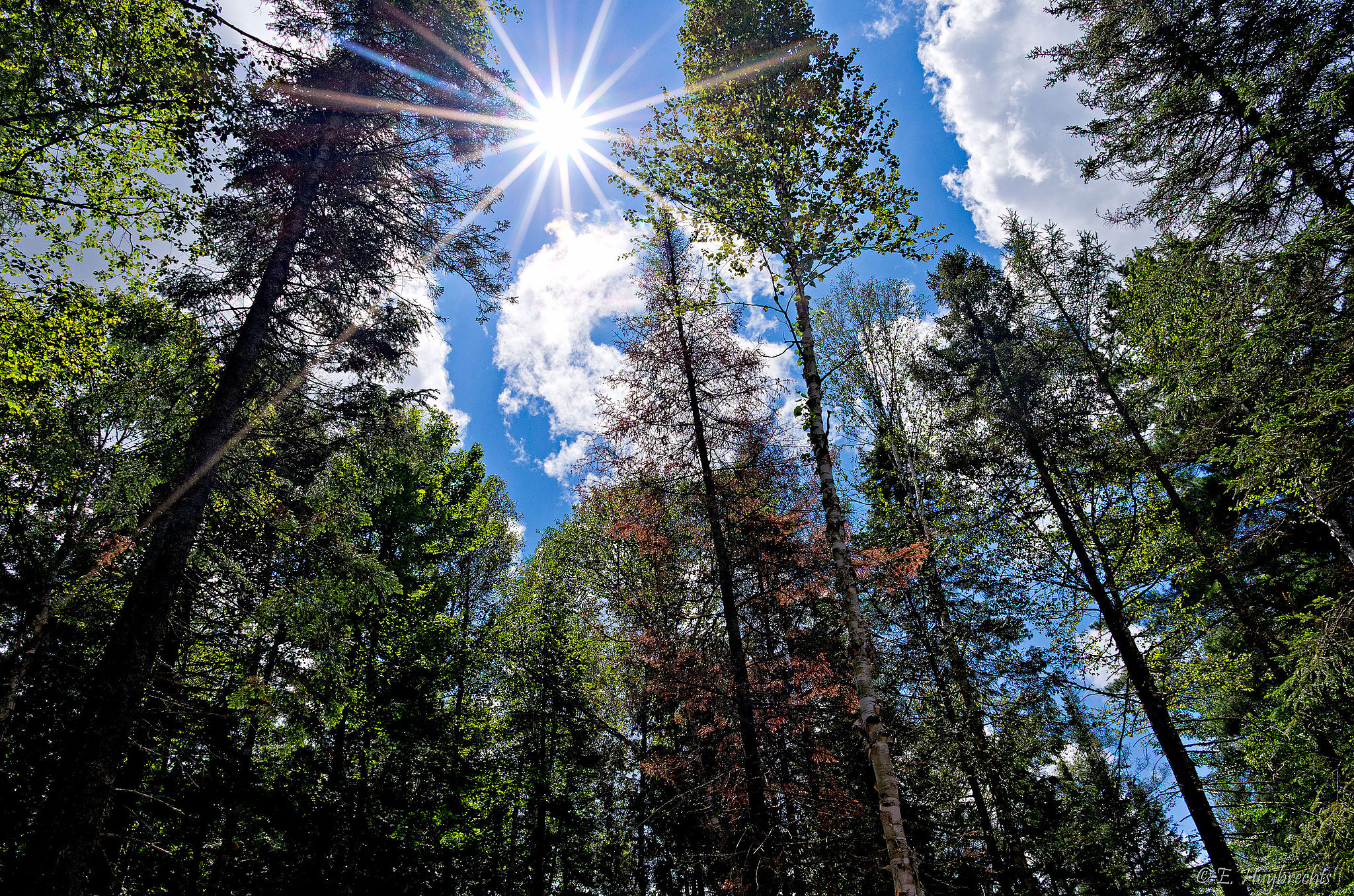 For the love of trees and their leafy kin, and with Australia’s horrendous fires on my mind, here’s a piece I wrote a few years ago about the surprising capabilities of plants that make their burning especially sad. Meanwhile, researchers continue to uncover remarkable details about plants’ lives, as in this report about their (almost human?) physiological/chemical responses to attack and injury, and this about the botanical version of a cry of distress. Plus, everyone is raving about this book--I haven’t read it yet but it’s on my list!
For the love of trees and their leafy kin, and with Australia’s horrendous fires on my mind, here’s a piece I wrote a few years ago about the surprising capabilities of plants that make their burning especially sad. Meanwhile, researchers continue to uncover remarkable details about plants’ lives, as in this report about their (almost human?) physiological/chemical responses to attack and injury, and this about the botanical version of a cry of distress. Plus, everyone is raving about this book--I haven’t read it yet but it’s on my list!
As for the fires here in the U.S.? Unfortunately, they’ll be back soon.
The fires, the fires. When I started writing this some weeks back there were 137 of them torching forests across the American West. There are many fewer now—thank firefighters and weather—but so far they’ve consumed some 8.5 million acres of trees, some of them old growth, many of them on parkland filled with wildlife. British Columbia, too, has seen more fire destruction in recent months than anyone alive can recall. While massive hurricanes and flood waters and devastating earthquakes have steered our collective empathy to the south, parts of the Northwest smolder on.
Appropriately, we mourn for the people who have died or are still suffering from all of these disasters. Their agony isn’t abated by clear skies. Some of us also ache for the animals, those killed but maybe even more so those left behind in the chaos, confused and terrified.
And then there are the trees. Up north fires gobbled up huge swaths of them in no time; down south, winds ripped individuals out by the roots or snapped their spines and flung their limbs. We don’t tend to think of a body count when plants are the victims, but if we did, the number would be tragically high.
Landscapes shorn by the elements, fortunately, tend to come back. The collection of species may change some, especially as invasive plants rise up from the disturbed soils; but after wildfires especially, forests do recover. Nature has long peddled flames as a cleansing force that, ultimately, replenishes spent earth with nutrients to begin anew. Our misguided attempts decades ago to douse all fire in fact only made the trees more vulnerable; today, we let some fires burn and even burn on purpose to get rid of tinder if nature isn’t keeping her house tidy. Even when fire is sparked by ignorance and flung toys, as is true this year of the worst of the blazes, green things find a way back.
Still. I’m sad about the trees. And perhaps this time I’m sad for the trees, too. Their tragically high body count is on my mind.
That’s because of the rising voices of people like forest ecologist Suzanne Simard. More than two decades ago, in her studies of paper birch and Douglas fir in British Columbian forests, she discovered that the trees are linked via a wide-reaching network of fungi in the soil that lets them communicate and, in a sense, behave as a single organism striving to be the best it can.
She’s been tapping into that network every since, reporting that through this fungal pipeline the plants can share all sorts of chemical information, pass out nutrients, and even offer warnings (e.g., of a new species trying to dominate). A healthy tree can send carbon to shore up native seedlings against invasive ones, for example, while trees in sun can give shaded neighbors a boost to get them through the dark times. A sick tree can “ask” for and receive help; a dying tree may hand off its nutrients to those nearby, a form of recycling. Simard stands out for her descriptions of “mother trees”— which, she explains, are most heavily wired to the plants around them, sometimes hundreds of other trunks, and actually recognize and nurture their own kin. A Mother, from her spot at the hub of communications, will colonize related seedlings with supersize fungal networks and then spoil them, whisking extra carbon through the living network at their roots to help them grow big and strong.
Peter Wohlleben, a German forest ranger, also speaks with and for and about the trees. He writes without apology of trees talking to each other, having friends, and caring for their kids as if they’re neighbors who live down the lane. (His book The Hidden Life of Trees: What They Feel, How They Communicate—Discoveries from a Secret World was a hit last year.) They count, they learn and remember, they wrinkle as they age, they even refuse to let go of family—funneling sugar to ancient stumps of long-ago-fallen kin. He said in 2016 to the NYT, “Sometimes, pairs…are so interconnected at the roots that when one tree dies, the other one dies, too.” His understanding of the forest is, like Simard’s, deeply planted in life science, but he’s reimagined trees in their social circles, standing around with pals, kindly adjusting their posture so as not to block another’s sun, caring for their families, sharing wisdom with their kids.

Not everyone (least of all some biologists) wants such anthropomorphic language applied to ecological exchanges. For me, the simple fact that a tree can tell kin from non-kin and can help keep relatives strong, and that a fir and a birch rely on one another for support even as they compete for resources, and that the network that threads trees together helps make the whole forest resilient…all of this makes me think a little differently about what it means when a fire—or wind and rain or, especially, loggers—fell a forest.
I’m not one to wave my arms yelling that oaks and elms are conscious and we should name them and give them human rights. But describing trees as connected and helpful to one another, especially observing the neural-like network that binds them in the soil, makes a walk through the forest something fresh and new and yet, too, a bit more familiar. This language makes the loss of both acres and individual trees sadder, and forest protection seem even more necessary and right.
I’ve been known to hug a tree now and then. Next time I come upon a grand dame surrounded by seedlings in the woods, one of those glorious giants coated with algae, with roots like nautical ropes at her base, I may just embrace her trunk and pray for nothing but soft rains.
——
Photos:
Forest fire in Montana: by John McColgan for the Forest Service, via Wikimedia Commons
Canadian forest trees: © Emmanuel Huybrechts [CC BY 2.0 (http://creativecommons.org/licenses/by/2.0)], via Wikimedia Commons
Hurricane Irma, Miami, 2017: By Cleverguy122 – Own work, CC BY-SA 4.0, https://commons.wikimedia.org/w/index.php?curid=62355639